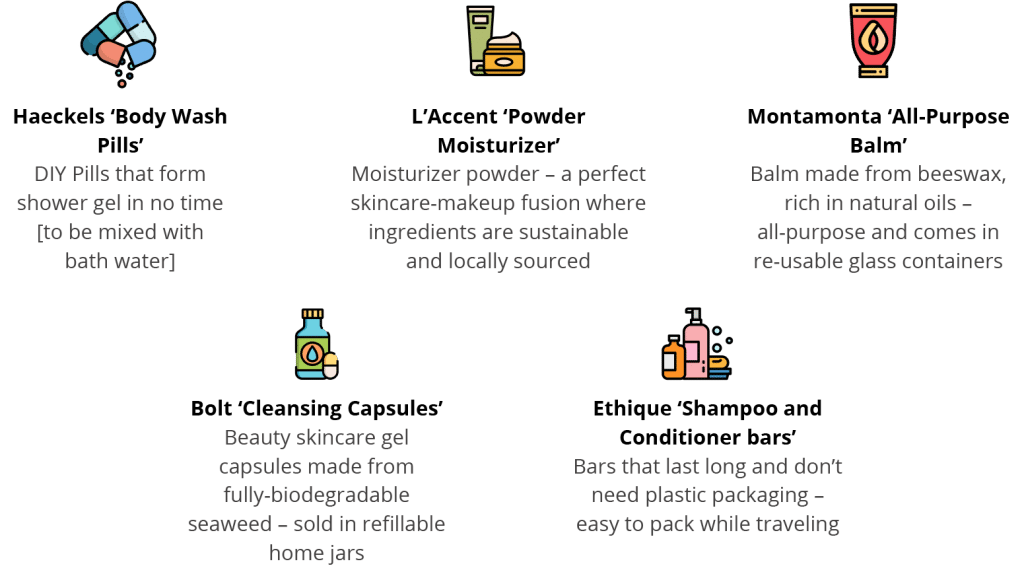Waterless Products: The Growing Trend in Beauty Products
The global water shortage is a huge area of concern. According to UNICEF 700 million people could be displaced by intense water scarcity by 2030, due to the ever-increasing world population, economic development, and increased water consumption. Saving the “luxurious resource” is critical.
Cutting back on water usage and saving the environmental balance is already seen as a focus area among consumers —
- 27% of global consumers are now trying to reuse or use less water
- Nearly a quarter of US adults are trying to use less water when bathing
- More than one in five UK adults have made changes to their bathroom routines for environmental reasons
While cutting back on the domestic use of water is one good solution to save the environment, businesses have also started doing their bit and using the cause to drive new innovation opportunities.
The Beauty and Personal Care industry is one of the biggest consumers of water, although less known
Growing agricultural needs are increasing the consumption of water globally, but there are other industries as well that are using water heavily. Take a look at any Beauty and Personal Care (BPC) product’s ingredient list and it is ‘aqua’ (water) at the top. In fact, whether these products list aqua as an ingredient or not, water is used as a filler in almost all beauty products.
According to Euromonitor, in 2015 Beauty and Personal care (BPC) industry consumed 8 million tonnes of water globally and its use was forecast to rise at a CAGR of 3% by 2020. The report also stated that water is a key ingredient accounting for 46%, on average, of BPC product formulations, with hair care and bath and shower products together accounting for around 70% of the total water added to BPC products.
With this in mind, we can question ourselves:
How green is our bathroom cabinet?
The BPC industry is foraying into innovative formats using the waterless beauty concept
According to Mintel, nearly half of the waterless beauty and personal care products launched in 2019 were from skincare.
Water is set to be a precious commodity as consumption outstrips supply. The more consumers become aware of waterless products, the more beauty brands will need to change how they manufacture and formulate products to limit their dependence on water.
– Global Beauty and Personal Care Analyst, Mintel
The concept of ‘waterless beauty’ is about the possibility of using recycled water, new sources of water, or no water at all to formulate products. Solid Bar formats, Powder products, Cleansing Balms, and No-Water Makeup are a few waterless formats currently being explored. As a replacement for water, the use of botanical, fruit-based & hydrating oils is trending to reduce water usage.
BPC industry giants and upcoming brands are already embracing waterless beauty products, with a focus on sustainability. L’Oréal has pledged to reduce its water consumption by a whopping 60% (per finished product unit) by 2021 and Unilever has set goals to halve the environmental impact (including water usage) of the production and use of its products by 2030. Brands such as Lush, Ethique, and Pinch of Colour (the world’s first completely water-free makeup brand) have championed the concept of waterless products.
Here are some examples of innovative “waterless beauty” products:
CPG companies in the BPC space have an opportunity – It’s time to say no to H20
Not only is the waterless beauty trend great for the earth, but it’s also good news in many other aspects. Here’s why.
- Water is just an over-exploited ‘filler ingredient’
Water reduces the effectiveness of beauty products. Water-free products, on other hand, are concentrated and often more effective, with fewer/no preservatives, and the formulas have been great for sensitive skin types.
- Going water-free also significantly reduces plastic usage
Packaging/shipping for waterless beauty products requires minimum or zero plastic packagings, which goes a long way in making a positive change for the planet without impacting the consumer’s day-to-day life.
However, there are challenges…
- Water is the best-known solvent – easy to mix, dispense, and incorporate active ingredients, and going water-free creates hurdles in the formulation.
- In the context of the above, industries need to explore, develop, and implement new technologies and processes to produce waterless formulations, which means the products, at the beginning at least, will carry a higher price tag that will be passed to the consumer.
Waterless beauty is definitely the next big trend in beauty and cosmetics and calls for manufacturers and industry experts to collaboratively come up with good, cost-effective waterless solutions for all customer segments.
Authored by: Priyanka Mohanty and Kavana K S
Course5 Intelligence has been partnering with global CPG clients for 15+ years in taking informed decisions on sustainability and new innovations through trend monitoring and meta-analysis solutions. We specialize in providing 360-degree insights through market opportunity analysis, to monitor category trends by combining data from disparate data sources such as social media, search engine trends, customer support data, patents data, and syndicated data. The combination of our domain knowledge with analytics, applied AI and digital technology empowers us to deliver business-relevant insights at high speeds.

Priyanka Mohanty
Priyanka has close to 15 years of experience in market research and insight generation. She is passionate around learning the Consumer Packaged Goods (CPG) category,...Read More

Don’t miss our next article!
Sign up to get the latest perspectives on analytics, insights, and AI.







